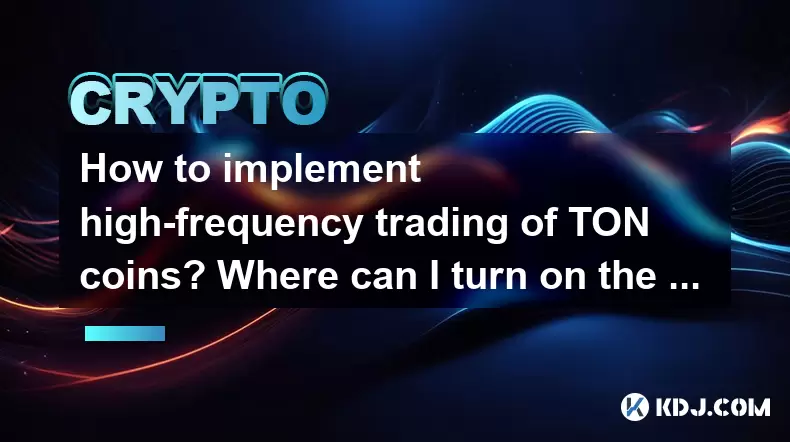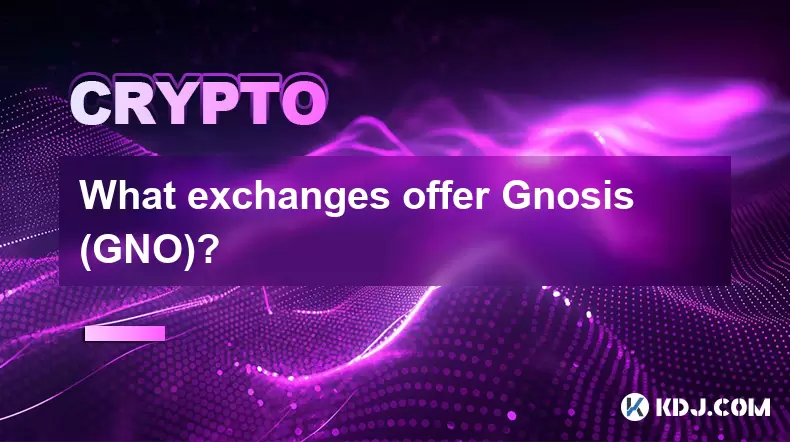-
 Bitcoin
Bitcoin $118600
-2.59% -
 Ethereum
Ethereum $4282
-0.42% -
 XRP
XRP $3.129
-4.21% -
 Tether USDt
Tether USDt $0.0000
0.01% -
 BNB
BNB $805.4
-1.80% -
 Solana
Solana $174.3
-5.77% -
 USDC
USDC $0.9998
-0.01% -
 Dogecoin
Dogecoin $0.2230
-6.33% -
 TRON
TRON $0.3466
1.70% -
 Cardano
Cardano $0.7745
-5.73% -
 Chainlink
Chainlink $21.37
-3.53% -
 Hyperliquid
Hyperliquid $42.93
-7.25% -
 Stellar
Stellar $0.4324
-4.94% -
 Sui
Sui $3.660
-7.17% -
 Bitcoin Cash
Bitcoin Cash $591.6
2.72% -
 Hedera
Hedera $0.2467
-7.04% -
 Ethena USDe
Ethena USDe $1.001
0.00% -
 Avalanche
Avalanche $22.92
-6.14% -
 Litecoin
Litecoin $118.8
-3.79% -
 Toncoin
Toncoin $3.378
-0.46% -
 UNUS SED LEO
UNUS SED LEO $9.011
-1.15% -
 Shiba Inu
Shiba Inu $0.00001294
-5.81% -
 Uniswap
Uniswap $11.24
0.53% -
 Polkadot
Polkadot $3.870
-6.16% -
 Cronos
Cronos $0.1662
-1.68% -
 Dai
Dai $1.000
0.02% -
 Ethena
Ethena $0.7915
-5.62% -
 Bitget Token
Bitget Token $4.414
-1.65% -
 Monero
Monero $259.3
-3.85% -
 Pepe
Pepe $0.00001120
-8.29%
How to implement high-frequency trading of TON coins? Where can I turn on the automatic order function?
To implement HFT for TON coins, set up high-speed internet, use colocation, and choose platforms like Binance or Huobi with robust APIs for automated trading.
May 20, 2025 at 10:28 am

How to Implement High-Frequency Trading of TON Coins? Where Can I Turn on the Automatic Order Function?
High-frequency trading (HFT) in the realm of cryptocurrencies, including TON coins, involves executing a large number of orders at very high speeds. This method relies on sophisticated algorithms and powerful computing systems to analyze multiple markets and execute orders based on market conditions. For those interested in implementing HFT for TON coins, understanding the process and the tools available is crucial.
Understanding High-Frequency Trading with TON Coins
High-frequency trading of TON coins involves using automated trading systems to buy and sell TON coins in milliseconds. The goal is to capitalize on small price movements that may occur multiple times per second. To successfully implement HFT, traders must have access to real-time market data, low-latency trading infrastructure, and algorithms designed to execute trades quickly and efficiently.
Setting Up the Infrastructure for HFT
Before diving into the specifics of trading TON coins, it's essential to set up the right infrastructure. This includes:
- High-speed internet connection: A stable and fast internet connection is critical for executing trades quickly.
- Colocation services: Placing your trading servers in the same data center as the exchange can reduce latency.
- Powerful computing hardware: High-performance servers and specialized hardware like FPGAs can help process data and execute trades faster.
Choosing the Right Trading Platform
To engage in HFT for TON coins, selecting a platform that supports high-frequency trading is vital. Some exchanges offer APIs that allow for automated trading, which is essential for HFT. Examples of platforms that might support HFT for TON coins include:
- Binance: Known for its robust API and high liquidity, Binance is a popular choice for HFT.
- Huobi: Another exchange with a strong API and support for TON trading.
- KuCoin: Offers a variety of trading pairs and an API suitable for HFT.
Developing or Acquiring HFT Algorithms
The heart of HFT lies in the algorithms used to analyze market data and execute trades. Developing your own algorithms requires a deep understanding of market dynamics, programming skills, and access to historical and real-time data. Alternatively, acquiring pre-built algorithms from reputable sources can be a faster way to start HFT, though customization might be limited.
Implementing the HFT Strategy for TON Coins
Once the infrastructure is in place and the platform is chosen, the next step is to implement the HFT strategy for TON coins. This involves:
- Connecting to the exchange API: Use the exchange's API to access real-time market data and execute trades.
- Setting up the trading algorithm: Configure the algorithm to monitor TON coin prices and execute trades based on predefined conditions.
- Testing the strategy: Before going live, backtest the strategy using historical data and run simulations to ensure it performs as expected.
Turning on the Automatic Order Function
To enable the automatic order function for HFT of TON coins, follow these steps:
- Access the trading platform: Log into the exchange where you plan to trade TON coins.
- Navigate to the API section: Find the section where API keys are managed.
- Generate API keys: Create new API keys with the necessary permissions for trading.
- Configure the trading software: Use the generated API keys to connect your trading software to the exchange.
- Enable automatic orders: In your trading software, enable the automatic order function, which will allow your algorithms to execute trades without manual intervention.
Monitoring and Adjusting the HFT Strategy
After setting up and enabling automatic orders, continuous monitoring and adjustment of the HFT strategy are crucial. Monitor performance metrics such as profit/loss, trade frequency, and slippage. Adjust the algorithms based on market conditions and performance data to optimize the strategy for TON coins.
Frequently Asked Questions
Q: Can I use a regular trading account for HFT of TON coins?
A: While it's technically possible to use a regular trading account, HFT typically requires specialized accounts with higher trading limits and lower fees. Check with your exchange to see if they offer accounts tailored for HFT.
Q: How much capital is required to start HFT of TON coins?
A: The amount of capital required can vary widely depending on the strategy and the scale of operations. Some traders start with as little as $10,000, while others might require millions. It's important to start with an amount you can afford to lose, given the high risk associated with HFT.
Q: Are there any regulatory considerations for HFT of TON coins?
A: Yes, regulatory considerations can vary by jurisdiction. Some countries have specific regulations governing HFT, including requirements for registration, reporting, and compliance with market manipulation rules. It's essential to research and comply with the regulations in your area.
Q: Can I use cloud services for HFT of TON coins?
A: While cloud services can provide scalable computing resources, they may introduce additional latency, which can be detrimental to HFT. If you choose to use cloud services, ensure they offer low-latency connections and are located near the exchange's data center.
Disclaimer:info@kdj.com
The information provided is not trading advice. kdj.com does not assume any responsibility for any investments made based on the information provided in this article. Cryptocurrencies are highly volatile and it is highly recommended that you invest with caution after thorough research!
If you believe that the content used on this website infringes your copyright, please contact us immediately (info@kdj.com) and we will delete it promptly.
- Dogecoin, Presale, Surge: Riding the Meme Coin Wave
- 2025-08-12 11:10:12
- Dogecoin, Tron, and the ROI Reality Check: What's a Crypto Investor to Do?
- 2025-08-12 11:15:12
- Ethereum Layer-2 Scaling Competition Heats Up as ETH Breaks $4K
- 2025-08-12 10:30:12
- China Regulation, Stablecoins, and BNB Presale: Navigating the Crypto Landscape
- 2025-08-12 11:30:12
- Meme Coins, Investment, and Token Burns: What's Hot in 2025?
- 2025-08-12 10:30:12
- China's National Security Alarm Bells Ring Over Worldcoin's Iris Scans
- 2025-08-12 11:35:12
Related knowledge

How to purchase Aragon (ANT)?
Aug 09,2025 at 11:56pm
Understanding Aragon (ANT) and Its PurposeAragon (ANT) is a decentralized governance token that powers the Aragon Network, a platform built on the Eth...

Where to trade Band Protocol (BAND)?
Aug 10,2025 at 11:36pm
Understanding the Role of Private Keys in Cryptocurrency WalletsIn the world of cryptocurrency, a private key is one of the most critical components o...

What is the most secure way to buy Ocean Protocol (OCEAN)?
Aug 10,2025 at 01:01pm
Understanding Ocean Protocol (OCEAN) and Its EcosystemOcean Protocol (OCEAN) is a decentralized data exchange platform built on blockchain technology,...

Where can I buy UMA (UMA)?
Aug 07,2025 at 06:42pm
Understanding UMA and Its Role in Decentralized FinanceUMA (Universal Market Access) is an Ethereum-based decentralized finance (DeFi) protocol design...

What exchanges offer Gnosis (GNO)?
Aug 12,2025 at 12:42pm
Overview of Gnosis (GNO) and Its Role in the Crypto EcosystemGnosis (GNO) is a decentralized prediction market platform built on the Ethereum blockcha...

How to buy Storj (STORJ) tokens?
Aug 09,2025 at 07:28am
Understanding Storj (STORJ) and Its Role in Decentralized StorageStorj is a decentralized cloud storage platform that leverages blockchain technology ...

How to purchase Aragon (ANT)?
Aug 09,2025 at 11:56pm
Understanding Aragon (ANT) and Its PurposeAragon (ANT) is a decentralized governance token that powers the Aragon Network, a platform built on the Eth...

Where to trade Band Protocol (BAND)?
Aug 10,2025 at 11:36pm
Understanding the Role of Private Keys in Cryptocurrency WalletsIn the world of cryptocurrency, a private key is one of the most critical components o...

What is the most secure way to buy Ocean Protocol (OCEAN)?
Aug 10,2025 at 01:01pm
Understanding Ocean Protocol (OCEAN) and Its EcosystemOcean Protocol (OCEAN) is a decentralized data exchange platform built on blockchain technology,...

Where can I buy UMA (UMA)?
Aug 07,2025 at 06:42pm
Understanding UMA and Its Role in Decentralized FinanceUMA (Universal Market Access) is an Ethereum-based decentralized finance (DeFi) protocol design...

What exchanges offer Gnosis (GNO)?
Aug 12,2025 at 12:42pm
Overview of Gnosis (GNO) and Its Role in the Crypto EcosystemGnosis (GNO) is a decentralized prediction market platform built on the Ethereum blockcha...

How to buy Storj (STORJ) tokens?
Aug 09,2025 at 07:28am
Understanding Storj (STORJ) and Its Role in Decentralized StorageStorj is a decentralized cloud storage platform that leverages blockchain technology ...
See all articles

























































































